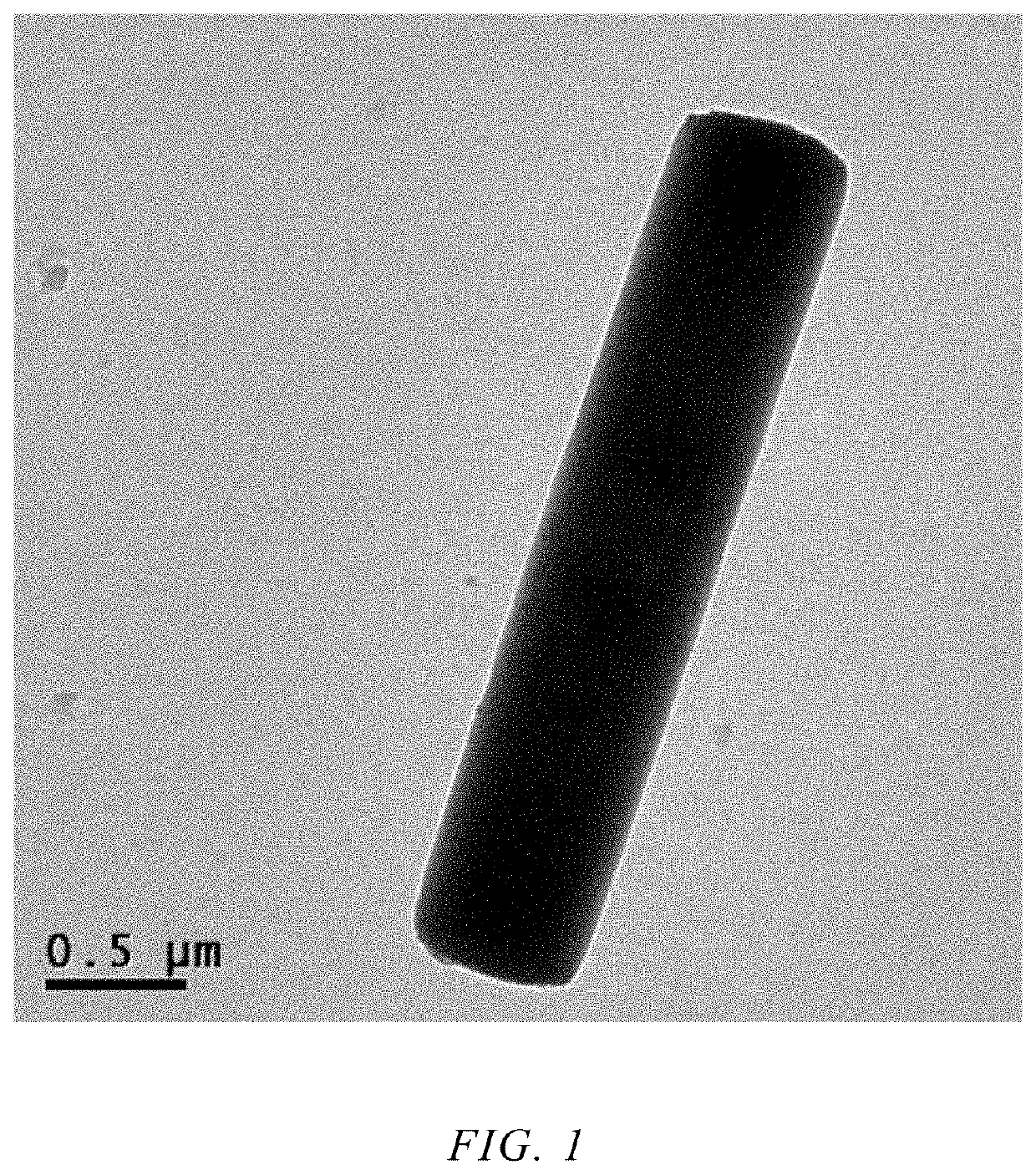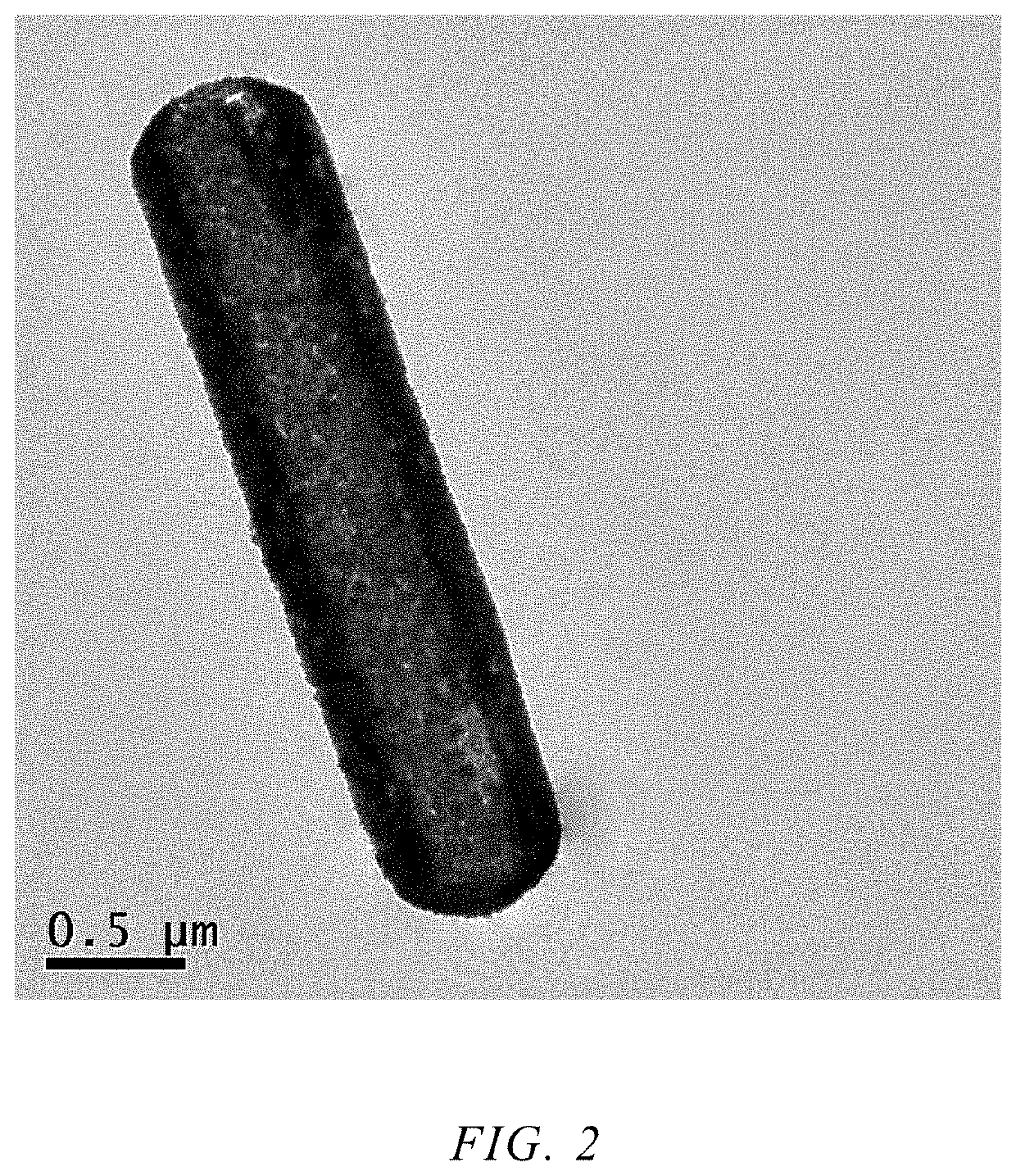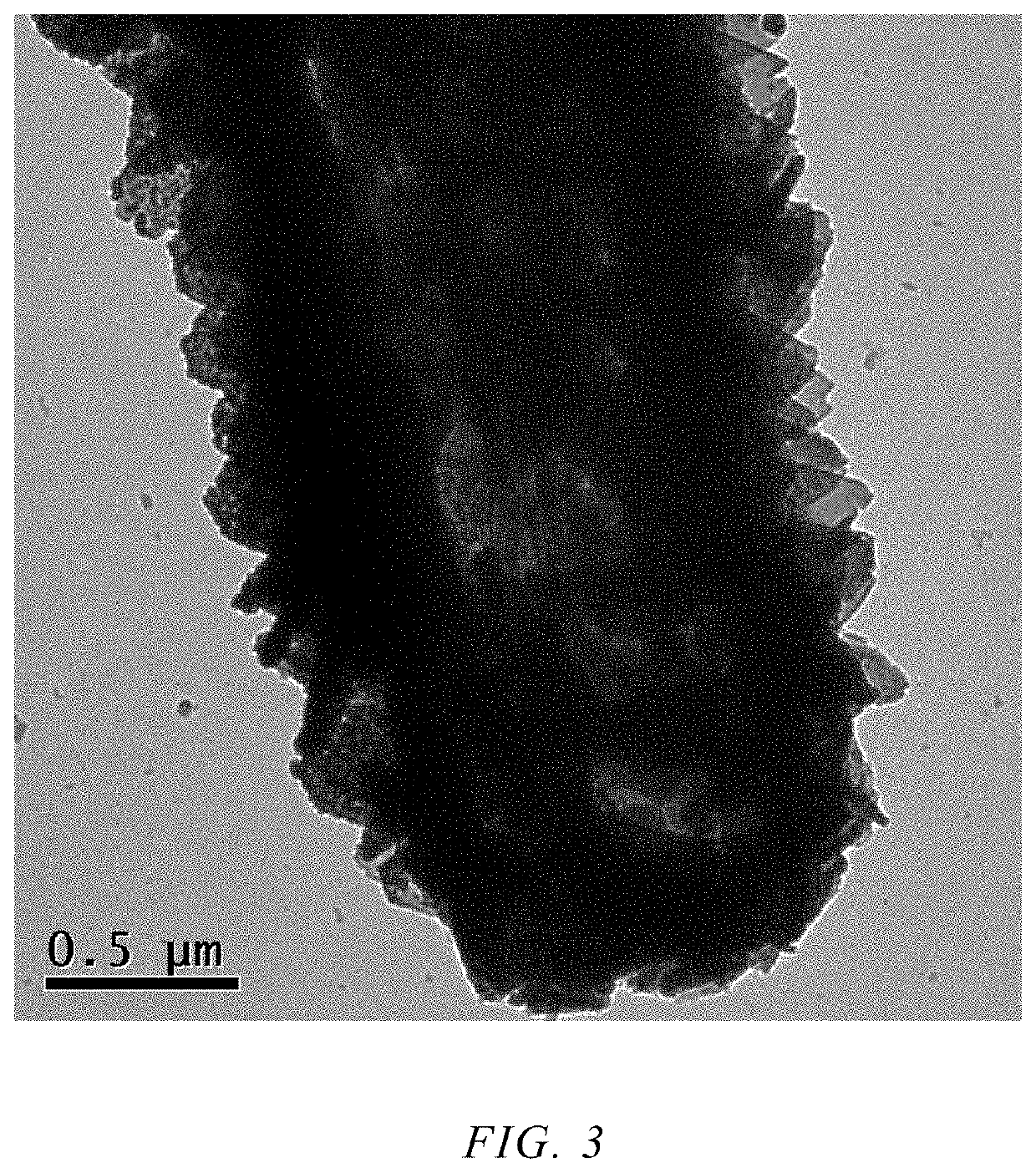Heterojunction composite material consisting of one-dimensional in2o3 hollow nanotube and two-dimensional znfe2o4 nanosheet, and application thereof in water pollutant removal
a composite material and one-dimensional technology, applied in the field of nano composite materials and photocatalytic technology, can solve the problems of increasing environmental pollution problems, low removal efficiency, and shortage of renewable energy for human beings, and achieve the effect of easy separation
- Summary
- Abstract
- Description
- Claims
- Application Information
AI Technical Summary
Benefits of technology
Problems solved by technology
Method used
Image
Examples
embodiment 1
[0036]Synthesis of In template through solvothermal method comprising following steps: 30 mg of In(NO3)3.4.5H2O and 30 mg of terephthalic acid are dissolved in 30 ml of N,N-Dimethylformamide (DMF) and stirred for 2 min to obtain a colorless and transparent solution. Then, the resultant solution is refluxed at 120° C. for 30 min. After cooling to room temperature, pumping filtrate with 0.22 m microporous filter membrane to obtain a white product, washed with ethanol three times and dried at 60° C. in a blast drying oven for 2 h to obtain the In template. As can be seen in FIG. 1, the TEM image shows that the In template exhibited solid structure, with about 3.1 m in length and about 650 nm in diameter.
embodiment 2
[0037]Preparation of one-dimensional hollow nanotube In2O3: First, weigh 20 mg of the In template obtained in Embodiment 1 and disperse it in 200 μl of absolute ethanol and 10 μl of Nafion solution, disperse it uniformly by ultrasound for 20 min, then apply it to the surface of the ITO glass and dry it. It is placed in a muffle furnace and kept at 120° C. for 2 h in an air atmosphere, then heated to 500° C. at a heating rate of 5° C. / min and calcined for 2 h to obtain one-dimensional hollow nanotube In2O3 and its transmission electron microscope shown in Figure. 2, the obtained In2O3 has a hollow structure, and is attached to ITO glass (In2O3 / ITO). If not holding at 120° C. for 2 hours, directly calcining at 500° C. for 2 hours, the obtained In2O3 / ITO is used in Embodiment 4, and the heterojunction composite material consisting of one-dimensional In2O3 hollow nanotube and two-dimensional ZnFe2O4 nanosheets prepared according to Embodiment 4 is used with the method of Embodiment 6, a...
embodiment 3
[0039]Preparation of one-dimensional hollow nanotube and two-dimensional nanosheet heterojunction composites (In2O3 @ ZnFe2O4-400 s): Weigh 2.23 g zinc nitrate hexahydrate and 6.05 g ferric nitrate nonahydrate in 100 ml of deionized water and mix them, the solution is an electrolyte solution, using a three-electrode system (ITO glass with In2O3 attached to the surface obtained in Embodiment 2 as a working electrode, a platinum wire electrode as a counter electrode, and a calomel electrode as a reference electrode). Electrodeposition in the electrochemical workstation CHI660E Deposite at −1 V (vs.SCE) voltage for 400 s, wash with deionized water 3 times after the deposition to obtain In2O3 supported zinc-iron bimetal hydroxide composite material (In2O3 @ ZnFe-LDH-400 s). Drying at room temperature for 12 h; after drying, the above product is placed in a muffle furnace and calcined at 450° C. (heating rate of 5° C. / min) under an air atmosphere for 10 h to obtain one-dimensional indium...
PUM
| Property | Measurement | Unit |
|---|---|---|
| temperature | aaaaa | aaaaa |
| temperature | aaaaa | aaaaa |
| temperature | aaaaa | aaaaa |
Abstract
Description
Claims
Application Information
 Login to View More
Login to View More - R&D
- Intellectual Property
- Life Sciences
- Materials
- Tech Scout
- Unparalleled Data Quality
- Higher Quality Content
- 60% Fewer Hallucinations
Browse by: Latest US Patents, China's latest patents, Technical Efficacy Thesaurus, Application Domain, Technology Topic, Popular Technical Reports.
© 2025 PatSnap. All rights reserved.Legal|Privacy policy|Modern Slavery Act Transparency Statement|Sitemap|About US| Contact US: help@patsnap.com



